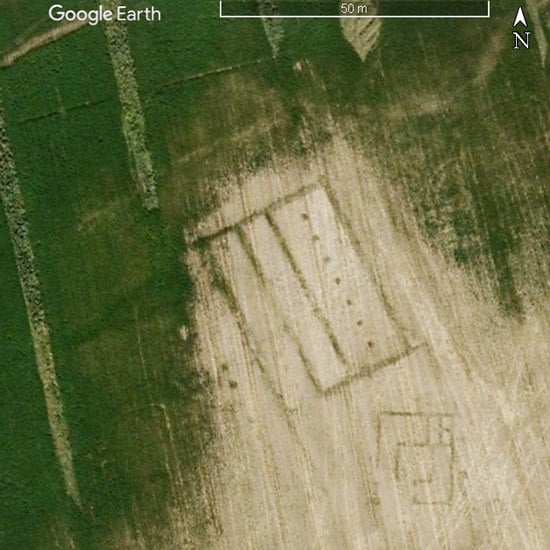A Pilot Study on Remote Sensing and Citizen Science for Archaeological Prospection
Abstract
1. Introduction
1.1. Archaeological Prospection
1.2. Remote Sensing for Archaeological Prospection
1.3. Data Availability and WMS
1.4. Citizen Science for Archaeological Prospection
1.5. Introduction to the Pilot Study
2. Materials and Methods
2.1. Study Area
2.2. Method
2.2.1. Task Definition
2.2.2. PyBossa Implementation
2.2.3. Task Run Navigator
3. Results
4. Discussion
5. Conclusions
Author Contributions
Funding
Acknowledgments
Conflicts of Interest
References
- Maggi, R. The Approach to preventive archaeology in Italy. In European Preventive Archaeology: Papers of the EPAC Meeting, Vilnius, 2004; Bozóki-Ernyey, K., Ed.; National Office of Cultural Heritag: Budapest, Hungary, 2007; pp. 146–154. [Google Scholar]
- Demoule, J.-P. Rescue Archaeology: A European View. Annu. Rev. Anthropol. 2012, 41, 611–626. [Google Scholar] [CrossRef]
- Campana, S. ‘Total Archaeology’ to reduce the need for Rescue Archaeology: The BREBEMI Project (Italy). In Remote Sensing for Archaeological Heritage Management, Proceedings of the 11th EAC Heritage Management Symposium, Reykjavík, Iceland, 25–27 March 2010; Cowley, D.C., Ed.; Europae Archaeologia Consilium (EAC), Association Internationale sans But Lucratif (AISBL): Brussels, Belgium, 2011; pp. 33–41. [Google Scholar]
- Campana, S.; Piro, S. Seeing the Unseen—Geophysics and Landscape Archaeology; CRC Press: London, UK, 2009. [Google Scholar]
- Sarris, A.; Jones, R. Geophysical and related techniques applied to archaeological survey in the Mediterranean: A review. J. Mediterr. Archaeol. 2000, 13, 3–75. [Google Scholar] [CrossRef]
- Witten, A.J. Handbook of Geophysics and Archaeology; Equinox Publishing: London-Oakville, UK, 2006; ISBN 1-904768-59-8. [Google Scholar]
- Stewart, C.; Lasaponara, R.; Schiavon, G. Multi-frequency, polarimetric SAR analysis for archaeological prospection. Int. J. Appl. Earth Observ. Geoinf. 2014, 28, 211–219. [Google Scholar] [CrossRef]
- Chase, A.F.; Chase, D.Z.; Weishampel, J.F.; Drake, J.B.; Shrestha, R.L.; Slatton, K.C.; Awe, J.J.; Carter, W.E. Airborne LiDAR, archaeology, and the ancient Maya landscape at Caracol Belize. J. Archaeol. Sci 2011, 38, 387–398. [Google Scholar] [CrossRef]
- Hesse, R. LiDAR-derived Local Relief Models—A new tool for archaeological prospection. Archaeol. Prospect. 2010, 17, 67–72. [Google Scholar] [CrossRef]
- Bewley, R.H.; Crutchley, S.P.; Shell, C.A. New light on an ancient landscape: LiDAR survey in the Stonehenge World Heritage Site. Antiquity 2005, 79, 636–647. [Google Scholar] [CrossRef]
- Chase, A.F.; Chase, D.Z.; Awe, J.J.; Weishampel, J.F.; Iannone, G.; Moyes, H.; Yaeger, J.; Brown, M.K.; Shrestha, R.L.; Carter, W.E. Ancient Maya regional settlement and inter-site analysis: The 2013 west-central Belize LiDAR Survey. Remote Sens. 2014, 6, 8671–8695. [Google Scholar] [CrossRef]
- Ulaby, F.T.; Moore, R.K.; Fung, A.K. Microwave Remote Sensing Active and Passive. Vol. II: Radar Remote Sensing and Surface Scattering and Emission Theory; Artech House: Ann Arbor, MI, USA, 1982. [Google Scholar]
- Gaber, A.; Koch, M.; Gereish, M.; Motoyuki, S.; El-Baz, F. Near-Surface Imaging of a Buried Foundation in the Western Desert, Egypt, Using Space-borne and Ground Penetrating Radar. J. Archaeol. Sci. 2013, 40, 1946–1955. [Google Scholar] [CrossRef]
- Stewart, C.; Montanaro, R.; Sala, M.; Riccardi, P. Feature Extraction in the North Sinai Desert Using Spaceborne Synthetic Aperture Radar: Potential Archaeological Applications. Remote Sens. 2016, 8, 825. [Google Scholar] [CrossRef]
- Stewart, C. Detection of archaeological residues in vegetated areas using satellite synthetic aperture radar. Remote Sens. 2017, 9, 118. [Google Scholar] [CrossRef]
- Jiang, A.; Chen, F.; Masini, N.; Capozzoli, L.; Romano, G.; Sileo, M.; Yang, R.; Tang, P.; Chen, P.; Lasaponara, R.; et al. Archeological crop marks identified from Cosmo-SkyMed time series: The case of Han-Wei capital city, Luoyang, China. Int. J. Digit. Earth 2017, 10, 846–860. [Google Scholar] [CrossRef]
- Wilson, D.R. Air Photo Interpretation for Archaeologists; The History Press: London, UK, 1982. [Google Scholar]
- Ceraudo, G. Aerial Photography in Archaeology. In Good Practice in Archaeological Diagnostics: Non-Invasive Survey of Complex Archaeological Sites; Springer: New York, NY, USA, 2013; pp. 11–30. [Google Scholar]
- Crawford, O.G.S. Air Survey and Archaeology. Ordnance Survey Professional Paper No. 7; HSMO: Southampton, UK, 1928. [Google Scholar]
- Knipling, E.B. Physical and physiological basis for the reflectance of visible and near-infrared radiation. Remote Sens. Environ 1970, 1, 155–159. [Google Scholar] [CrossRef]
- Lasaponara, R.; Masini, N. Detection of archaeological crop marks by using satellite QuickBird multispectral imagery. J. Archaeol. Sci. 2007, 34, 214–221. [Google Scholar] [CrossRef]
- Agapiou, A.; Alexakis, D.; Hadjimitsis, D. Spectral sensitivity of ALOS, ASTER, IKONOS, LANDSAT and SPOT satellite imagery intended for the detection of archaeological crop marks. Int. J. Digit. Earth 2012, 7, 351–372. [Google Scholar] [CrossRef]
- Ben-Dor, E.; Portugali, J.; Kochavi, M.; Shimoni, M.; Vinitzky, L. Airborne thermal video radiometry and excavation planning at Tel Leviah, Golan Heights, Israel. J. Field Archaeol. 2013, 26, 117–127. [Google Scholar]
- Rowlands, A.; Sarris, A. Detection of exposed and subsurface archaeological remains using multi-sensor remote sensing. J. Archaeol. Sci 2007, 34, 795–803. [Google Scholar] [CrossRef]
- Verhoeven, G.J.J.; Schmitt, K.D. An attempt to push back frontiers—Digital near-ultraviolet aerial archaeology. J. Archaeol. Sci. 2010, 37, 833–845. [Google Scholar] [CrossRef]
- Agapiou, A. Enhancement of Archaeological Proxies at Non-Homogenous Environments in Remotely Sensed Imagery. Sustainability 2019, 11, 3339. [Google Scholar] [CrossRef]
- Agapiou, A.; Alexakis, D.D.; Sarris, A.; Hadjimitsis, D.G. Orthogonal Equations of Multi-Spectral Satellite Imagery for the Identification of Un-Excavated Archaeological Sites. Remote Sens. 2013, 5, 6560–6586. [Google Scholar] [CrossRef]
- Agapiou, A.; Hadjimitsis, D.G.; Alexakis, D.D. Evaluation of broadband and narrowband vegetation indices for the identification of archaeological crop marks. Remote Sens. 2012, 4, 3892–3919. [Google Scholar] [CrossRef]
- Michael, D.; Geert, V.; Clemen, A.; Michael, W.; Michal, R. New ways to extract archaeological information from hyperspectral pixels. J. Archaeol. Sci. 2014, 52, 84–96. [Google Scholar]
- Aqdus, S.A.; Drummond, J.; Hanson, W.S. Discovering Archaeological Cropmarks: A Hyperspectral Approach. Int. Arch. Photogramm. Remote Sens. Spat. Inf. Sci. 2008, 37, 361–365. [Google Scholar]
- Agapiou, A.; Hadjimitsis, D.G.; Sarris, A.; Georgopoulos, A.; Alexakis, D.D. Optimum temporal and spectral window for monitoring crop marks over archaeological remains in the Mediterranean region. J. Archaeol. Sci. 2013, 40, 1479–1492. [Google Scholar] [CrossRef]
- Jones, R.J.; Evans, R. Soil and crop marks in the recognition of archaeological sites by air photography. In Aerial Reconnaissance for Archaeology; Wilson, D.R., Ed.; The Council for British Archaeology: London, UK, 1975; Volume 12, pp. 1–11. [Google Scholar]
- Evans, R.; Jones, R. Crop marks and soils at two archaeological sites in britain. J. Archaeol. Sci. 1977, 4, 63–76. [Google Scholar] [CrossRef]
- Rączkowski, W. Cropmarks 2011 in Poland–is there a need for further discussion? In Air Photo Interpretation for Archaeologists; Wilson, D.R., Ed.; AARGnews: London, UK, 2011; Volume 43, pp. 37–42. [Google Scholar]
- Doneus, M. Vertical and Oblique Photographs. AARGnews 2000, 20, 33–39. [Google Scholar]
- Ma, Y.; Wu, H.; Wang, L.; Huang, B.; Ranjan, R.; Zomaya, A.; Jie, W. Remote sensing big data computing: Challenges and opportunities. Future Gener. Comput. Syst. 2015, 51, 47–60. [Google Scholar] [CrossRef]
- Denis, G.; Claverie, A.; Pasco, X.; Darnis, J.P.; de Maupeou, B.; Lafaye, M.; Morel, E. Towards disruptions in Earth observation? New Earth Observation systems and markets evolution: Possible scenarios and impacts. Acta Astronaut. 2017, 137, 415–433. [Google Scholar] [CrossRef]
- Kaimaris, D.; Georgoula, O.; Patias, P.; Stylianidis, E. Comparative analysis on the archaeological content of imagery from Google Earth. J. Cult. Herit. 2011, 12, 263–269. [Google Scholar] [CrossRef]
- Kennedy, D.; Bishop, M. Google earth and the archaeology of Saudi Arabia: A case study from the Jeddah area. J. Archaeol. Sci. 2011, 38, 1284–1293. [Google Scholar] [CrossRef]
- Luo, L.; Wang, X.; Guo, H.; Lasaponara, R.; Shi, P.; Bachagha, N.; Yao, Y.; Masini, N.; Chen, F.; Ji, W.; et al. Google Earth as a Powerful Tool for Archaeological and Cultural Heritage Applications: A Review. Remote Sens. 2018, 10, 1558. [Google Scholar] [CrossRef]
- Zhang, J. Multi-source remote sensing data fusion: Status and trends. Int. J. Image Data Fusion 2010, 1, 5–24. [Google Scholar] [CrossRef]
- Yu, L.; Gong, P. Google Earth as a virtual globe tool for earth science applications at the global scale: Progress and perspectives. Int. J. Remote Sens. 2011, 33, 3966–3986. [Google Scholar] [CrossRef]
- Marshall, Y. Community archaeology. In The Oxford Handbook of Archaeology; Gosden, C., Cunliffe, B., Joyce, R.A., Eds.; Oxford University Press: Oxford, UK, 2009; pp. 1078–1102. [Google Scholar]
- Smith, M.L. Citizen science in archaeology. Am. Antiq. 2014, 79, 749–762. [Google Scholar] [CrossRef]
- Lin, A.Y.-M.; Huynh, A.; Lanckriet, G.; Barrington, L. Crowdsourcing the Unknown: The Satellite Search for Genghis Khan. PLoS ONE 2014, 9, e114046. [Google Scholar] [CrossRef] [PubMed]
- GlobalXplorer. Available online: https://www.globalxplorer.org/ (accessed on 16 June 2020).
- Lambers, K.; Verschoof-van der Vaart, W.B.; Bourgeois, Q.P. Integrating remote sensing, machine learning, and citizen science in Dutch archaeological prospection. Remote Sens. 2019, 11, 794. [Google Scholar] [CrossRef]
- Der Vaart, W.B.V.-V.; Lambers, K.; Kowalczyk, W.; Bourgeois, Q.P.J. Combining Deep Learning and Location-Based Ranking for Large-Scale Archaeological Prospection of LiDAR Data from The Netherlands. ISPRS Int. J. Geo-Inf. 2020, 9, 293. [Google Scholar] [CrossRef]
- Stewart, C.; Lazzarini, M.; Luna, A.; Albani, S. Deep Learning with Open Data for Desert Road Mapping. Remote Sens. 2020, 12, 2274. [Google Scholar] [CrossRef]
- Frondoni, R.; Mollo, B.; Capotorti, G. A landscape analysis of land cover change in the Municipality of Rome (Italy): Spatio-temporal characteristics and ecological implications of land cover transitions from 1954 to 2001. Landsc. Urban Plan. 2011, 100, 117–128. [Google Scholar] [CrossRef]
- Quilici, L. Collatia; Forma Italiae, regio 1, Rome: De Luca, Italy, 1974. [Google Scholar]
- Keay, S.; Millett, M.; Paroli, L.; Strutt, K. Portus: An Archaeological Survey of the Port of Imperial Rome; Archaeological Monographs of the British School at Rome: London, UK, 2005. [Google Scholar]
- Quilici, L.; Gigli, S.Q. Crustumerium: Latium vetus; Consiglio Nazionale delle Ricerche: Rome, Italy, 1980. [Google Scholar]
- Campana, S. Filling Gaps in Space and Time at Veii. ‘Emptyscapes’ Project; University of Texas Press: Auxtin, TX, USA, 2016. [Google Scholar]
- González, D.L.; Keegan, M.; Mendes, A.; Pollock, R.; Babu, N.; Fiordalisi, F.; Oliveira, N.A.; Andersson, K.; Aisch, G.; Chhabda, D.; et al. Scifabric/pybossa. Available online: http://doi.org/10.5281/zenodo.3882334 (accessed on 16 August 2020).
- Labrèche, G. Crowdsourcing for Archaeological Prospection. Available online: https://github.com/ESA-PhiLab/buried-archaeology (accessed on 4 July 2020).
- Lombraña González, D. Buried Archaeology. Available online: https://esa.pybossa.com/ (accessed on 4 July 2020).
- Hyppönen, P. Salaria via usque ad lapidem XVIII, a Reconstruction of the Ancient Road Line between Porta Collina and the 18th Milestone of the Road, in Faculty of Humanities; University of Oulu: Oulu, Finland, 2014. [Google Scholar]
- Ward-Perkins, J.B. Veii: The historical topography of the ancient city. In Papers of the British School at Rome; British School at Rome: Rome, Italy, 1961; Volume 29, pp. 1–119. [Google Scholar]
- Marin, M.; Ingleton, D.; Rahman, Z.; Walker, T.; Richman, M.; Geber, T.; Dunn, A. Microtasking. Available online: https://library.theengineroom.org/microtasking/ (accessed on 9 July 2020).
- Sui, D.; Elwood, S.; Goodchild, M. (Eds.) Crowdsourcing Geographic Knowledge; Springer Science & Business Media: Dordrecht, The Netherlands, 2013. [Google Scholar]
- Senaratne, H.; Mobasheri, A.; Ali, A.L.; Capineri, C.; Haklay, M. A review of volunteered geographic information quality assessment methods. Int. J. Geogr. Inf. Sci. 2017, 31, 139–167. [Google Scholar] [CrossRef]
- Pinheiro, M.B.; Davis, C.A. ThemeRise: A theme-oriented framework for volunteered geographic information applications. Open Geospat. Data Softw. Stand. 2018, 3, 9. [Google Scholar] [CrossRef]
- Agapiou, A.; Lysandrou, V.; Lasaponara, R.; Masini, N.; Hadjimitsis, D.G. Study of the Variations of Archaeological Marks at Neolithic Site of Lucera, Italy Using High-Resolution Multispectral Datasets. Remote Sens. 2016, 8, 723. [Google Scholar] [CrossRef]


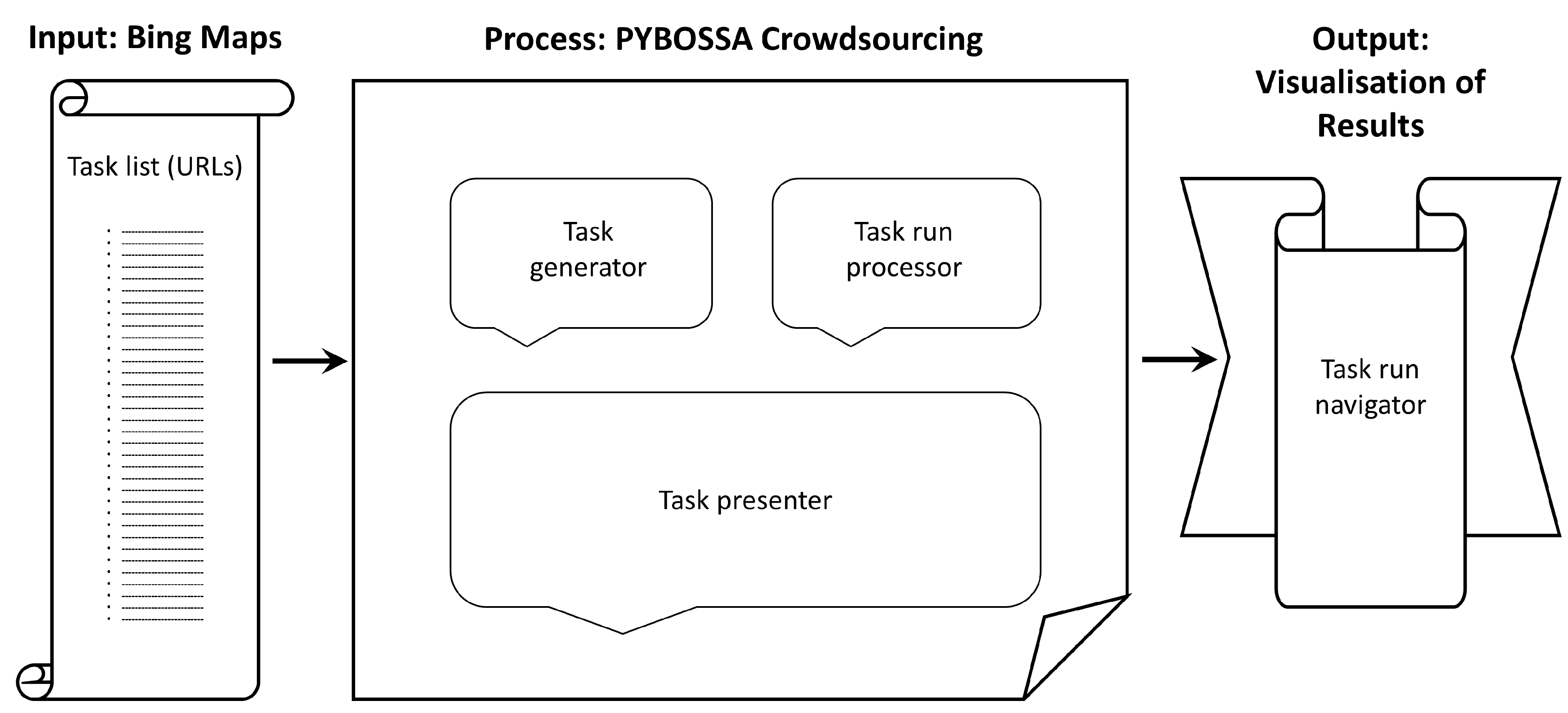


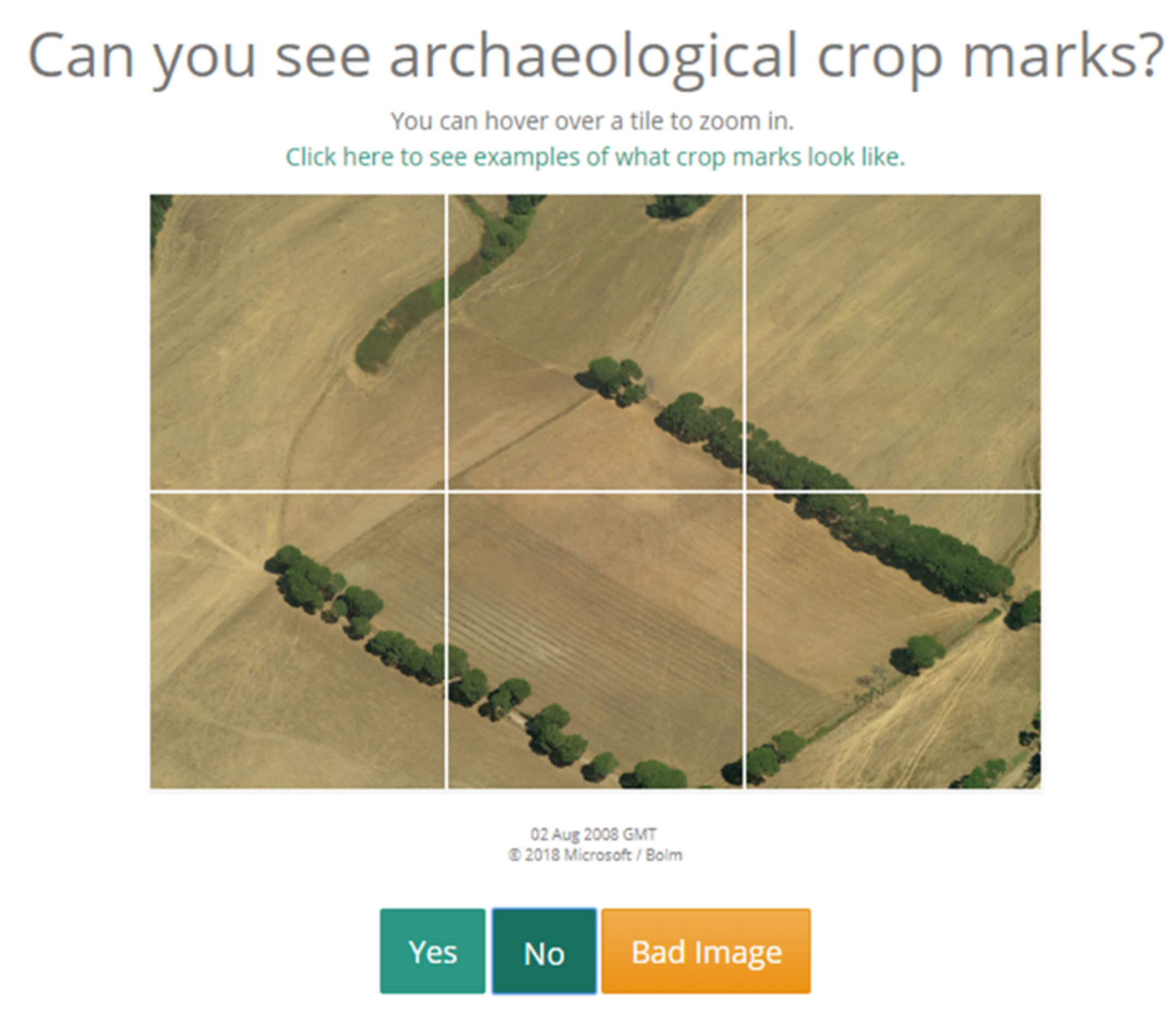
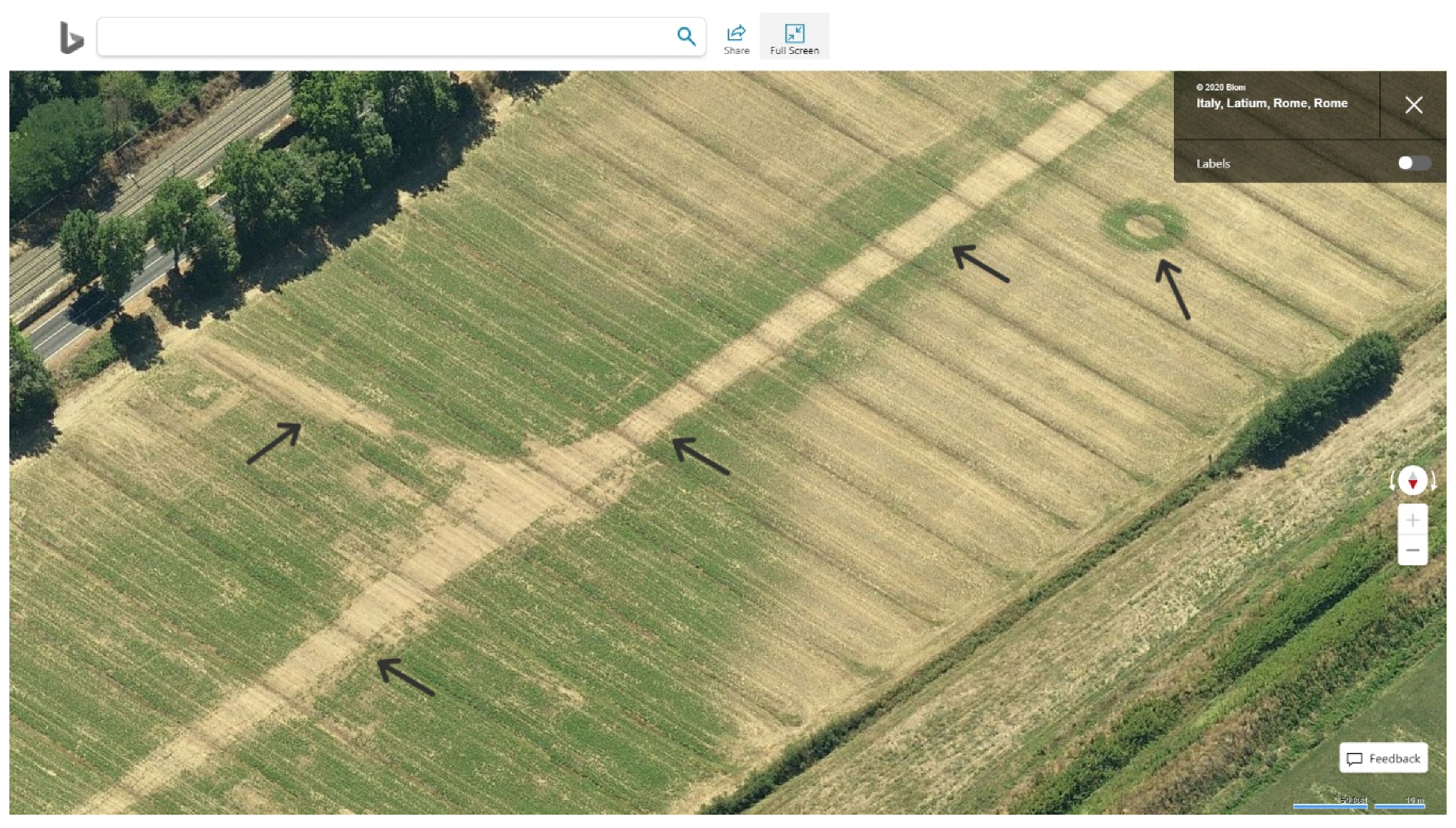
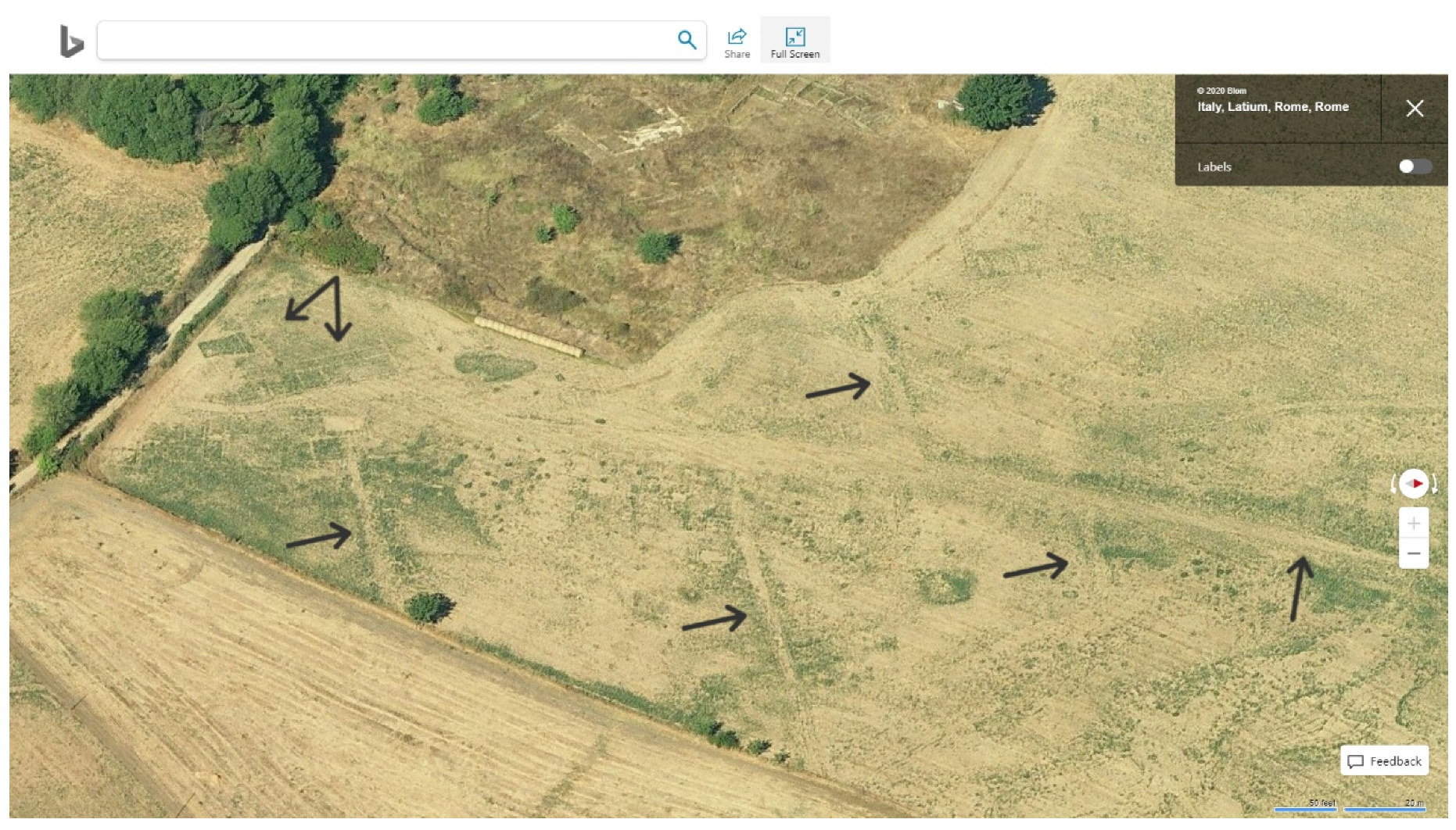

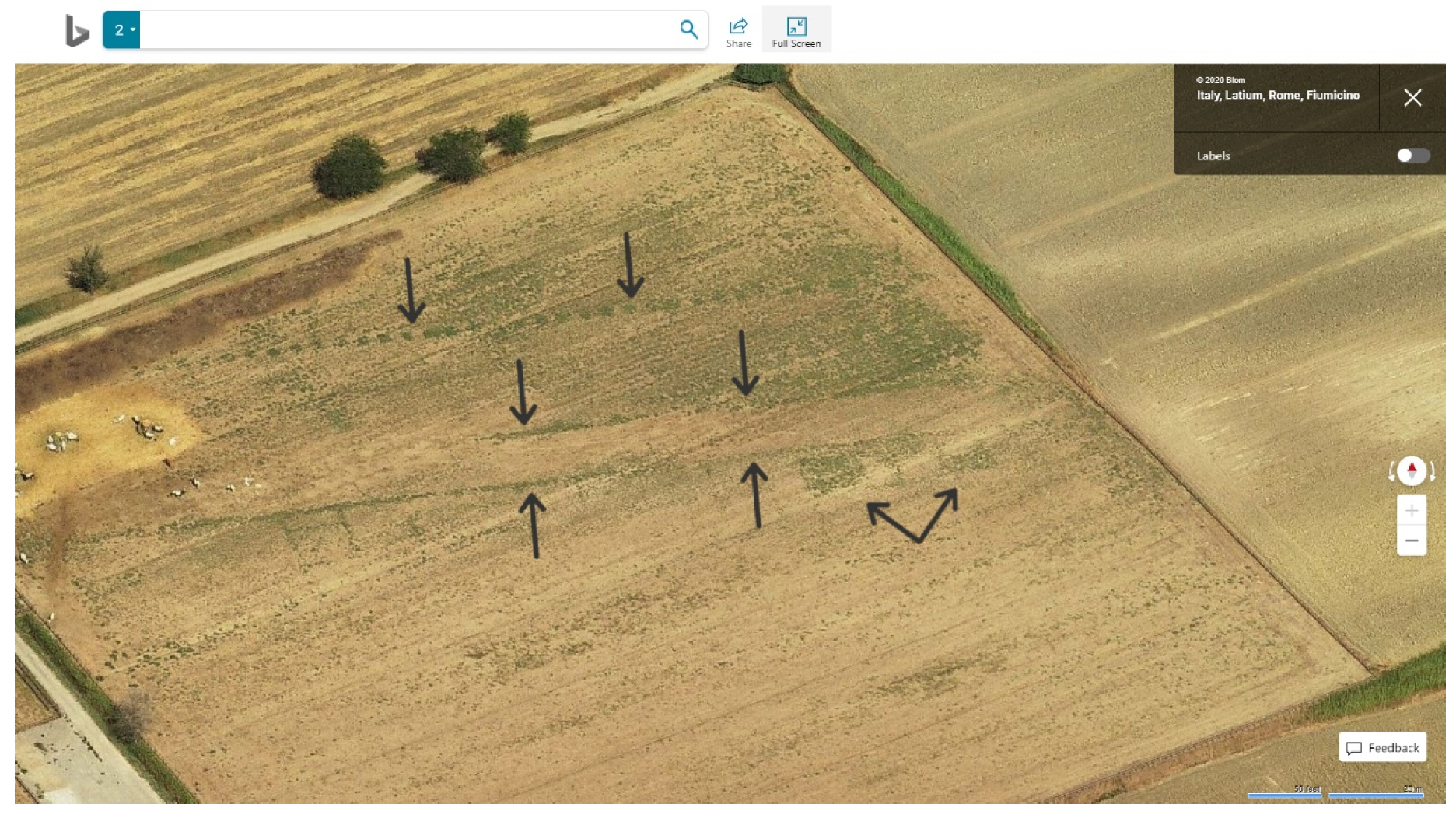
| Positive Answers | Tasks Completed as of 5 July 2020 | ||
|---|---|---|---|
| Crowdcrafting (Depth First, Redundancy 3) | ESA Website (Breadth First, No Redundancy) | Total Tasks | |
| 0 | 787 | 16,464 | 17,251 |
| 1 | 222 | 1225 | 1447 |
| 2 | 40 | 17 | 57 |
| 3 | 10 | 0 | 10 |
| Total | 1059 (272 positive) | 17,706 (1242 positive) | 18,765 (1514 positive) |
© 2020 by the authors. Licensee MDPI, Basel, Switzerland. This article is an open access article distributed under the terms and conditions of the Creative Commons Attribution (CC BY) license (http://creativecommons.org/licenses/by/4.0/).
Share and Cite
Stewart, C.; Labrèche, G.; González, D.L. A Pilot Study on Remote Sensing and Citizen Science for Archaeological Prospection. Remote Sens. 2020, 12, 2795. https://doi.org/10.3390/rs12172795
Stewart C, Labrèche G, González DL. A Pilot Study on Remote Sensing and Citizen Science for Archaeological Prospection. Remote Sensing. 2020; 12(17):2795. https://doi.org/10.3390/rs12172795
Chicago/Turabian StyleStewart, Christopher, Georges Labrèche, and Daniel Lombraña González. 2020. "A Pilot Study on Remote Sensing and Citizen Science for Archaeological Prospection" Remote Sensing 12, no. 17: 2795. https://doi.org/10.3390/rs12172795
APA StyleStewart, C., Labrèche, G., & González, D. L. (2020). A Pilot Study on Remote Sensing and Citizen Science for Archaeological Prospection. Remote Sensing, 12(17), 2795. https://doi.org/10.3390/rs12172795




